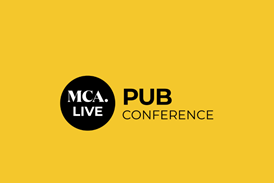It seems that with the introduction of pension auto-enrolment, the national living wage and the constant balance of retaining an appropriate distance whilst ensuring compliance on tronc arrangements, staff costs have been high on the F&B agenda for some time. The introduction of a new tax, the Apprenticeship Levy, from April 2017 seems set to ensure that this trend continues for a while at least, says Stephanie Wilson, partner, Human Capital - Employment Tax at BDO.
The Government’s stated objective and the underlying reason for introducing the Levy is to create 3 million new apprenticeships by 2020 to help address the UK’s shortage of skilled labour. The Levy will apply to all UK employers but with an annual tax free allowance of £15k, it will only be payable by those with a pay bill of £3m per annum or more. The tax will initially be charged at a rate of 0.5% and the monies raised will be used to fund new apprenticeships.
As this funding will be made available to all employers, it is a good idea to consider at an early stage how the Levy charge may impact your pay and training budgets. This is because while funding will be available to you to fund all training, which qualifies on a standard apprenticeship framework, any bespoke training geared to your house or brand requirements is unlikely to qualify for funding. If you are a business, which has to pay the Levy to HMRC, you will undoubtedly want to maximise the amount of funding you can access.
Many hospitality businesses have set up their own in-house training academy. It is important to be aware that unless your academy is listed on the Skills Funding Agency’s “Register of Apprentice Assessment Organisations” as an approved training provider, you will not be able to access Levy funds to pay for the training delivered by your in-house academy.
Despite the fact that April 2017 is only a few months away, the tax legislation is still in draft and (at the time of writing) the Skills Funding Agency have not released details of the new standard .apprenticeship frameworks. It is therefore fair to say that many employers are struggling to redesign and refresh their training strategies for 2017/18 and future years.
The following summarises what we currently know about how the Levy is expected to operate but we anticipate further developments before it commences in April 2017.
The Basics
The Levy will be charged on an employer’s ‘pay bill’ which is classified as the total earnings of the workforce in its entirety which are liable to employer Class 1 NIC. For Levy purposes, the employer is the organisation that has the Class 1 NIC liability and the Levy will be collected and paid over to HMRC via the payroll under the Real Time Information (RTI) regime. Continue to be vigilant if you have a tronc arrangement as if HMRC successfully challenge this, not only would Class 1 NIC be payable but the tronc distributions would form part of your ‘pay bill’ and therefore will be subject to the Levy.
This is just one of the complications to be considered when calculating your Levy payments. A monthly, cumulative, calculation and RTI submission is required, so if you have multiple payrolls operating on different pay cycles you will need to ensure that your internal systems and controls are robust and that all items subject to Class 1 NIC (e.g. pecuniary liabilities, equity awards for key employees, certain termination payments, etc.) are incorporated.
As mentioned above, the annual tax free allowance of £15k will remove any liability for those with a pay bill of £3m or less. However, the allowance will be applied on a cumulative basis and so at peak season you may find you need to make a Levy payment which can be clawed back in later months once your pay bill drops to general levels.
Connected organisations
There is also a need to aggregate pay bills with any organisations connected to you for Levy purposes when you consider the £3m threshold test. Once you have established which organisations you are connected to, the next step is to agree how the £15k annual allowance will be split between you. However, providing you have separate PAYE references, it is understood that each organisation will be able to access funds for qualifying training.
Another practical consideration for connected organisations is that once the “connected” test has been established at the start of the tax year, the position is upheld for the whole tax year. Therefore, if there is any M&A activity during the year, both organisations will be treated separately for Levy purposes in accordance with the position logged at 6 April.
Compliance and anti-avoidance
The draft legislation includes a range of anti-avoidance measures designed to ensure employers pay the correct Levy and do not introduce arrangements to reduce or avoid it. That said, if an organisation has or seeks to implement a salary sacrifice or flexible benefits arrangement as part of its reward and remuneration strategy, this would not be viewed by HMRC as avoidance. However, if the sole purpose for introducing such an arrangement was to reduce your Levy liability, it may well be viewed as an avoidance measure.
What can be drawn down from the a digital-levy account?
The Government is forming an Institute for Apprenticeships (planned to be fully operational by April 2017) to monitor and decide how Levy funding is spent.
To date, we know that it is intended that all employers, whether you pay the Levy or not, will be able to access funding for apprenticeships - most via a digital account, which will enable you to see your Levy contributions and/or how much apprenticeship training you may purchase with a registered training provider. It should be noted that the amount of funding an employer may spend on each apprentice will be capped.
The Government has stated that employers paying the Levy will receive a 10% top-up to their monthly contributions in respect of the proportion of their employees living in England (only) to spend on apprenticeship training.
The DfE and the Skills Funding Agency (SFA) are working to establish what types of training will qualify for Levy funding. It is likely this will include courses under an approved UK Government statutory apprenticeship standards framework but this may be broadened to include other recognised training.
Whilst the Levy applies to all UK employees, Levy payments will be split across the devolved nations according to where employees live. So if you have employees in England and Wales, for example, you will need to apply to the SFA to draw down from your English digital account, and then potentially make a separate application to its Welsh equivalent, if that is the stance that the Welsh government choose to take.
Different rules are likely to apply across each of the devolved nations. To date only the Scottish government has made any public comment and this was to advise that they are running a separate Consultation for Scottish employers to consider how best the Scottish Levy allocation might be spent.
Next steps
In conclusion, while payments for the Levy will not start until April 2017 and the legislation may still change, you would be strongly advised to examine the impact of this new tax on you from both a Finance and HR Training perspective.































